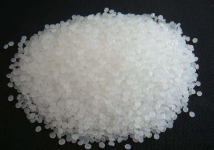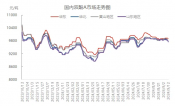read: 489 time:2025-07-01 13:42:12 from:化易天下
When comparing the acidity of different organic compounds, understanding the underlying chemical structure and resonance effects is crucial. In this article, we will delve into why picric acid is more acidic than phenol, focusing on the electronic effects of substituents and their impact on acidity.
Phenol is an aromatic compound with a hydroxyl group (-OH) directly bonded to a benzene ring. The acidity of phenol stems from its ability to donate a proton (H+) from the hydroxyl group, forming a phenoxide ion. Picric acid, on the other hand, is a trinitrophenol, meaning that it is a phenol molecule with three nitro groups (-NO2) attached to the benzene ring. These structural differences play a crucial role in their respective acidities.
The key to understanding why picric acid is more acidic than phenol lies in the presence of the nitro groups. Nitro groups are highly electron-withdrawing due to the resonance and inductive effects they exert. When a proton is lost from the hydroxyl group in picric acid, the resulting negative charge on the oxygen can be delocalized over the molecule more effectively due to the electron-withdrawing nature of the nitro groups.
In contrast, phenol has no such electron-withdrawing groups. The negative charge on the phenoxide ion is primarily localized on the oxygen and the ortho and para positions of the benzene ring, which is less stable compared to the delocalization in picric acid.
Another critical factor in explaining why picric acid is more acidic than phenol is resonance stabilization. In picric acid, the negative charge on the oxygen after deprotonation can be delocalized across the benzene ring and into the nitro groups through resonance. This extensive delocalization greatly stabilizes the picrate anion, making the loss of a proton much more favorable.
Phenol also undergoes resonance stabilization when it forms the phenoxide ion, but the stabilization is much less pronounced because there are no strong electron-withdrawing groups to facilitate this process. As a result, phenol is less willing to donate a proton, making it less acidic than picric acid.
The inductive effect further explains why picric acid is more acidic than phenol. The nitro groups in picric acid pull electron density away from the oxygen atom through the sigma bonds (inductive effect), which increases the positive character on the oxygen, making it more likely to release a proton. In phenol, the absence of such strong electron-withdrawing groups results in a weaker inductive effect, thereby reducing the compound's acidity.
The acidity of a compound is quantitatively expressed by its pKa value, where a lower pKa indicates a stronger acid. Picric acid has a pKa of approximately 0.4, while phenol has a pKa around 10. This significant difference in pKa values is a direct consequence of the factors discussed above—resonance stabilization, inductive effects, and the electron-withdrawing nature of the nitro groups in picric acid.
In summary, the reason why picric acid is more acidic than phenol can be attributed to the presence of three nitro groups in picric acid. These nitro groups enhance the acidity through strong electron-withdrawing effects, resonance stabilization, and inductive effects, all of which make the picrate ion more stable than the phenoxide ion. Understanding these effects provides a clear explanation of the significant difference in acidity between these two compounds.

Jincheng Petrochemical's 300000 ton polypropylene plant successfully trial production, 2024 polypropylene market analysis

The ABS market remains sluggish, what is the future direction?

Market differentiation of bisphenol A intensifies: prices rise in East China, while prices generally decline in other regions

The production method and process flow of silicone acrylic lotion, and what are the common raw materials